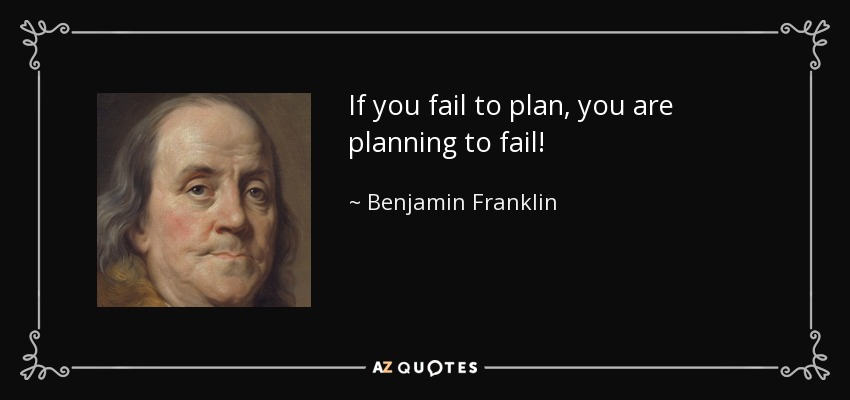Did you know that 80% of New Year’s resolutions fail by February? Strava, the fitness app, even pinpointed the exact moment when most people give up: the 19th of January, or “Quitter’s Day.” Why? Because vague goals and rigid plans rarely survive the reality of unexpected challenges. Source: CORDIS
In business, it’s no different. Planning an entire year ahead might sound ambitious, but it’s often pointless. Take 2020: by March, the carefully crafted strategies many businesses had built were tossed aside as the world adjusted to a global pandemic.
Here’s the truth: successful planning isn’t about starting strong. It’s about staying adaptable. The key isn’t to plan once and hope for the best—it’s to adopt an agile, continuous planning approach that evolves with the times.
This year, start differently. Begin in January—but don’t stop there. With a weekly or even daily rhythm, planning can become a natural, low-stress routine that brings clarity, alignment, and momentum to your entire organisation.
Why Most Plans Fail by January 19th
Benjamin Franklin once said, “If you fail to plan, you are planning to fail.” It’s a timeless truth—without a plan, chaos often follows. But here’s the catch: how you plan matters just as much as whether you plan at all. Poorly thought-out plans, or those created just to tick a box, can be another fast track to failure.
Think about it: how many business plans are made in December simply because “it’s what you’re supposed to do”? During the festive season, we hit a mental reset, convincing ourselves that the new year will bring clarity. But by the first workday of January, reality strikes. A calendar reminder pings, an urgent client email takes over, or your accountant starts chasing you for year-end numbers.
By then, it’s not just your plans that are on autopilot—it’s your days. For many, the lofty ambitions they had at the start of the year are already fading before “Quitter’s Day.”Why? Because the planning process itself was flawed from the start.
The Problem with One-Time Planning
Rushed, one-time planning in December often leads to:
- Misalignment: Goals that look good on paper but don’t connect to your team’s actual priorities.
- Inflexibility: Plans that can’t adapt to change, leaving you scrambling when the unexpected happens.
- Abandonment: Without regular follow-through, plans become dusty documents no one refers to again.
And let’s not forget 2020. That year reminded us all just how unpredictable life can be. A plan set in stone is of little use when the world shifts dramatically overnight. That’s why the traditional one-time planning model often sets businesses up to fail—it simply can’t keep pace with the unexpected.
According to Upmetrics, one of the top reasons business plans fail is not pivoting quickly enough. They note, “Sometimes, the very reason for a business plan failure is its inability to pivot at the right time.”

The Better Way: Continuous, Agile Planning
So, what’s the solution? It’s simple: Stop treating planning as a December ritual.Instead, make it a continuous process that evolves throughout the year. Here’s how:
- Start in January (only this time): When your team is refreshed, your mind is clear, and the pressure is off, begin with a high-level strategy and identify key objectives.
- Check in Monthly, Weekly and Daily: Keep planning alive through a rhythm of short, consistent updates. Whether it’s a quick team huddle or a dashboard review, these moments create alignment, address challenges, and maintain momentum.
- Choose the Right Framework: A well-designed planning framework brings clarity to your organisation. Everyone—from leadership to individual staff—understands what’s expected of them and how their contributions drive the bigger picture.
Adopting a growth mindset is also crucial. As highlighted in Fortune, a growth mindset involves viewing challenges as learning experiences rather than failures, which can significantly enhance goal achievement.
This approach isn’t just about spreading the workload; it’s about creating plans that are ambitious, dynamic, realistic, and actionable.
If you are interested to learn more immediately, please check out our Strategic Planning Series with suggestions and approaches you can implement directly.
Imagine December Done Differently
Fast-forward to next December. While others are rushing to finalise plans and scrambling to meet deadlines, you’re focused, calm, and maybe even taking time off.
Why?
Because your team has spent the year working from a thoughtful, adaptable plan. Therefore, there is no need for a stressed annual planning session next year.
Imagine not dreading December but enjoying it. No frantic meetings. No last-minute budget panics. Just clarity and confidence in the groundwork you’ve laid.
Doesn’t that sound better?

Relaxing on the beach: What next December could look like with better planning. Photo by Toa Heftiba on Unsplash
Time to Rethink Planning
As Benjamin Franklin said, “If you fail to plan, you are planning to fail.” But let’s take that one step further: if you fail to plan the right way, you might be setting yourself up to fail even faster.
So, as the year winds down, ask yourself: How can I make planning work not just for my business, but for me as a leader? This year, start in January—but don’t stop there. Make planning a natural, consistent routine, and watch the difference it makes for your team, your results, your sanity, and personal wellbeing.
Need Help?
A Call to Action
Are you ready to escape the December chaos and start planning smarter? At GrowthTailor, we help leaders like you—successful, profitable, but sensing there’s a better way.
Schedule your free consultation today and discover how a smarter planning approach can make 2024 your most strategic year yet.
Featured Image: Image by Gerd Altmann from Pixabay




